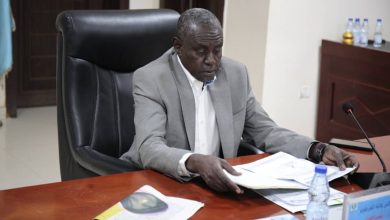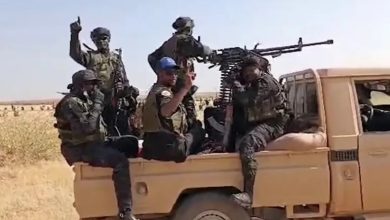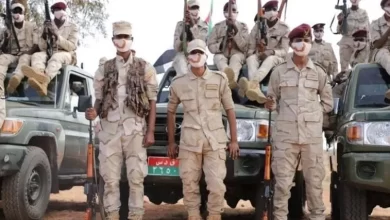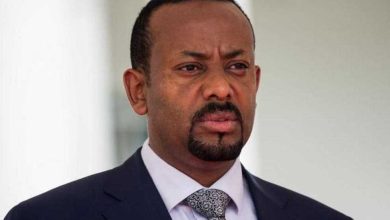Sudan: Genocide going on in Darfur

Agencies – Sudan Events
The UN, independent researchers and charities all highlight the brutality of a conflict that has left 9,000 people dead and 5.6 million displaced in the past seven months.
Riding horses, camels and motorbikes, the paramilitaries arrived on the outskirts of Ardamata in early November. Sudan’s Rapid Support Forces (RSF) fighters took men from homes that they then burned down; at least 800 people were killed and survivors were ordered to bury the dead.
The RSF went door-to-door in Ardamata, in west Darfur, according to the Global Centre for the Responsibility to Protect, rounding up and killing people from the Masalit ethnic group.
Investigators at the non-profit Centre for Information Resilience (CIR) have collated images from Ardamata that appear to confirm attacks on civilians. CIR’s Sudan Witness project has been monitoring human rights violations in the region, which is closed to foreigners and journalists, using open-source information, satellite imagery and Nasa-provided data, as well as gathering images from social media that are geolocated.
The Masalit have been targeted as supporters of the Sudanese Armed Forces (SAF) in the tensions and outbreaks of violence surrounding west Darfur’s capital of El Geneina.
The much-feared RSF, led by Mohamed Hamdan Dagalo, has been fighting SAF forces loyal to General Abdel Fattah al-Burhan since 15 April, when the two leaders began a tussle for power that again toppled Sudan into a civil war. The UN says more than 9,000 people have been killed and 5.6 million displaced in the past seven months.
The RSF now holds four of the five Sudanese army bases in the Darfur region and took control of Nyala and Zalingei in October. Fighters have been accused of carrying out an ethnic massacre in El Geneina, where mass graves were identified in July. The town of Ardamata marks a further increase in RSF forces’ control of the region.
CIR researchers have verified videos of militiamen rounding up and whipping men dressed in civilian clothing in Ardamata. One video shows men being struck with rifles by uniformed men, some of whom wore RSF insignia and called the men “sons of dogs”.
They killed every man they met in my neighbourhoods,” says Ibrahim Abakar (not his real name), a 40-year-old Ardamata resident. “I was praying when I heard the sound of an explosion. A shell killed my friends and nearly cut off my feet.”
The UN says at least 8,000 people fled Ardamata and crossed into Chad. Abakar is trying to reach Chad, but has been told he will have to pay 100,000 Sudanese pounds (£133) to militias near the border in order to cross. Almost 450,000 Sudanese have crossed into Chad since June.
Another Ardamata resident, Mubarak Osman, says the gunmen arrived and surrounded the town before the attack. He and six other men were ordered to bury dozens of bodies in mass graves.
The CIR says that satellite imagery shows fires in residential areas across Aradamata between 2 and 10 November, including at a camp for displaced people
Adam Mousa Obama, from the group Darfur Victim Support, which publishes videos of RSF abuses, says the group targets men in particular, to take their land and wipe them out as an Indigenous Darfuri group. The RSF grew out of, and is heavily comprised of, the Janjaweed militias that fought on behalf of the Sudanese government during the war in Darfur, and was responsible for atrocities that qualify as crimes against humanity, according to Human Rights Watch.
When they took Ardamata they made an announcement that all boys should come out. When they did, they started shooting them all. They want to destroy all the Indigenous people,” says Obama. “The youth have the power and ability to fight. They don’t want them to stay alive.”
Obama says it is time for world leaders “to stop the massacre … It’s a shame on humanity that this is still going on. There is a genocide going on in west Darfur.”
Filippo Grandi, the UN’s high commissioner for refugees, warned last week of the potential for a repeat of what happened in Darfur in the 2000s. The UN’s expert on genocide, Alice Wairimu Nderitu, warns of “a cycle of violence that finds no end”.
“The latest reports from the Darfur region depict a deeply disturbing picture of continued systematic and indiscriminate attacks against civilians, including along ethnic lines,” says Nderitu. “Current dynamics in the region could lead to further mass killings in an environment of complete lawlessness and impunity. The risks of genocide and related atrocity crimes in the region remain grimly high.”
The RSF has denied responsibility for the violence in Ardamata, blaming it on the Sudanese army.
Mohamed Suliman, a senior disinformation researcher at the Civic AI Lab at Northeastern University in Boston, says the RSF has used social media in an attempt to build an image of legitimacy, by issuing denials of alleged crimes and making promises to investigate, but has not followed up on claims it would investigate violence.
Activists warn that the RSF is better armed than the Janjaweed of more than a decade ago.
CIR-verified footage posted on a pro-RSF account on X, formerly known as Twitter, shows soldiers using a multiple launch rocket system. The footage, filmed on mobile phones, shows the missile system mounted on a flatbed truck. Cheers are heard as it is fired.
These weapon systems have the capacity to cause significant damage and their use poses a risk to the civilian population,” says Anouk Theunissen, the team leader for CIR’s Sudan Witness project. The CIR has also verified video of medical workers being abducted from a hospital in Nyala.
An activist from the city told the Guardian she had to escape Darfur by taking a series of cars through remote areas after the RSF besieged the homes of residents and held her parent’s hostage in their home.
The conflict is creating a humanitarian crisis in El Fasher in north Darfur, says Dr Mohammed Shatta, who is coordinating field operations for charity Relief International.
Shatta says that people are struggling to get water, medication is running out and that checkpoints around the city make it difficult for patients and medical staff to travel to health facilities. “El Fasher has become like a ghost town. You see parts of the city where you don’t see anyone. It’s so quiet you can hear your own breath,” he says.
Kashif Shafique, the country director for Relief International Sudan, says he is concerned about the use of heavy artillery and airstrikes.
“We have not yet seen violence like it … Thousands of people living in El Fasher have already been displaced as a result of previous conflicts. This escalation is driving families, particularly women and children, to uproot again and flee to neighbouring states and countries, such as Chad. These locations are already unable to cope with the number of refugees arriving to find safety.”
Adam Mousa Obama, from Darfur Victim Support, points out that El Fasher has already taken in many of the displaced from other parts of Darfur. Two of the Darfuri rebel groups – who have so far stayed out of the fighting – said at the weekend that they would join forces with the SAF against the RSF.
“If full fighting breaks out in El Fasher then I don’t think any civilian will survive,” says Obama.



